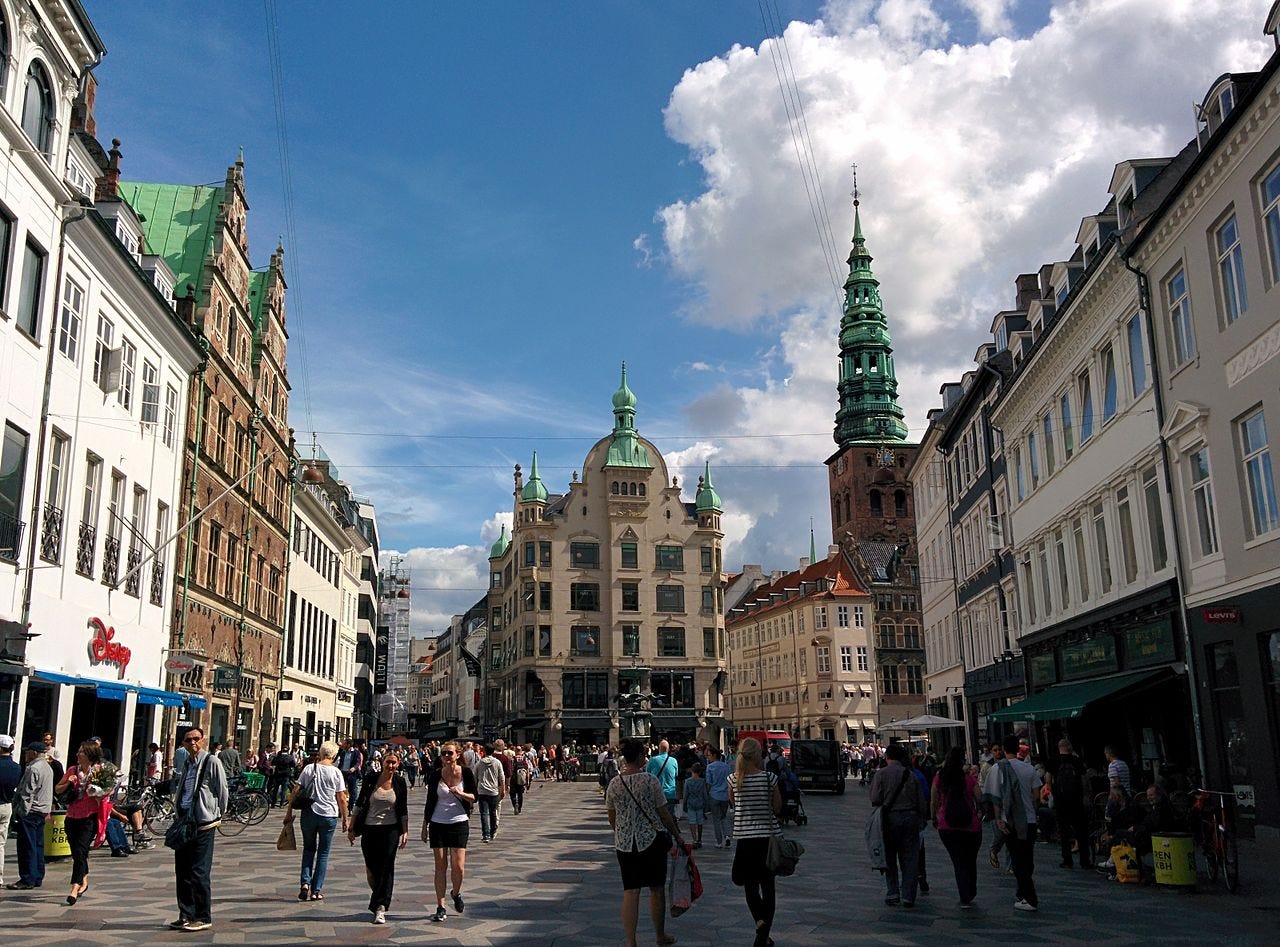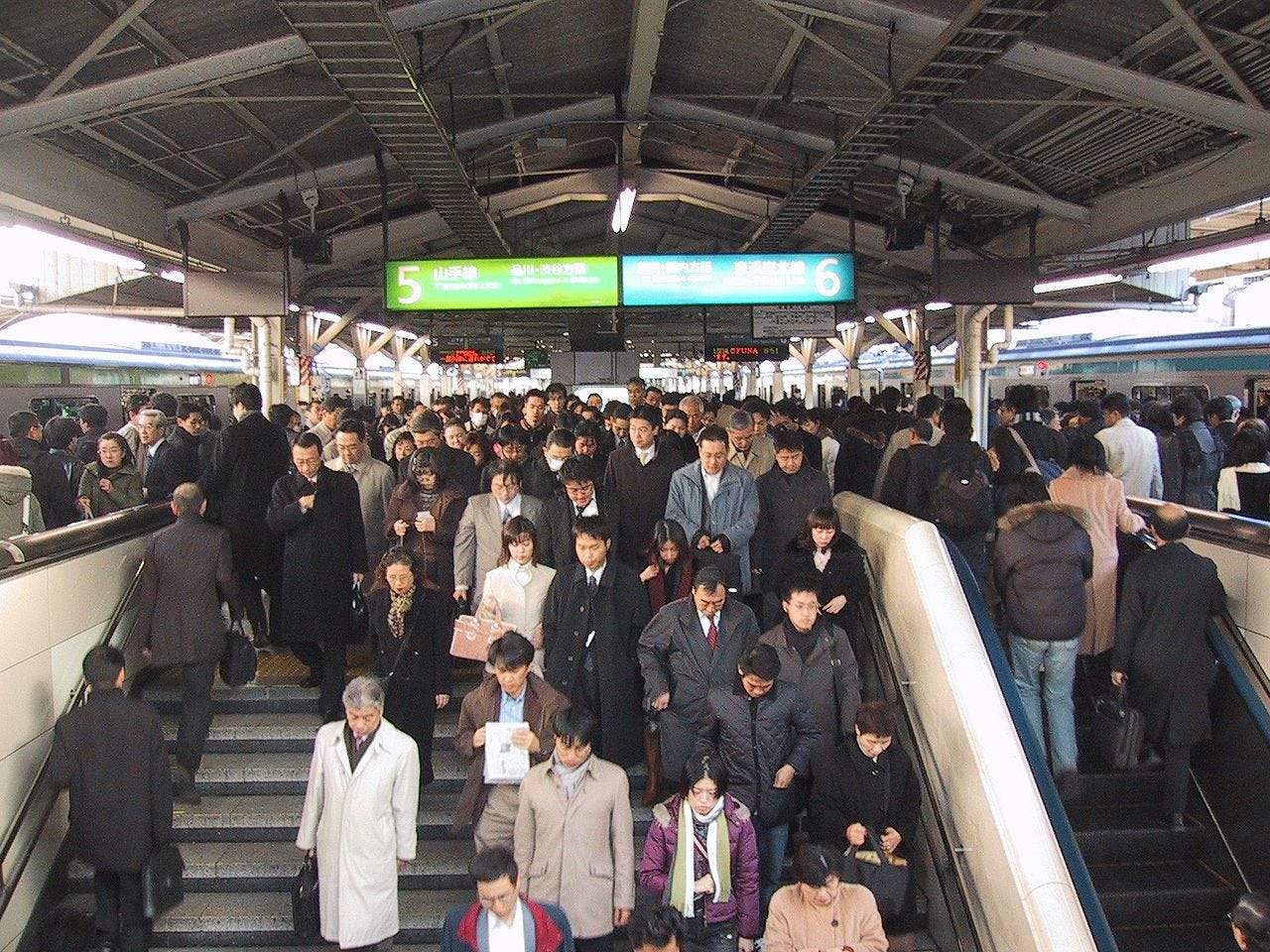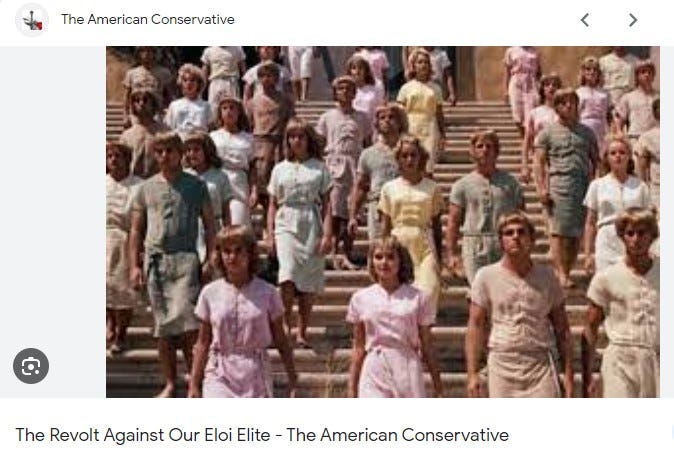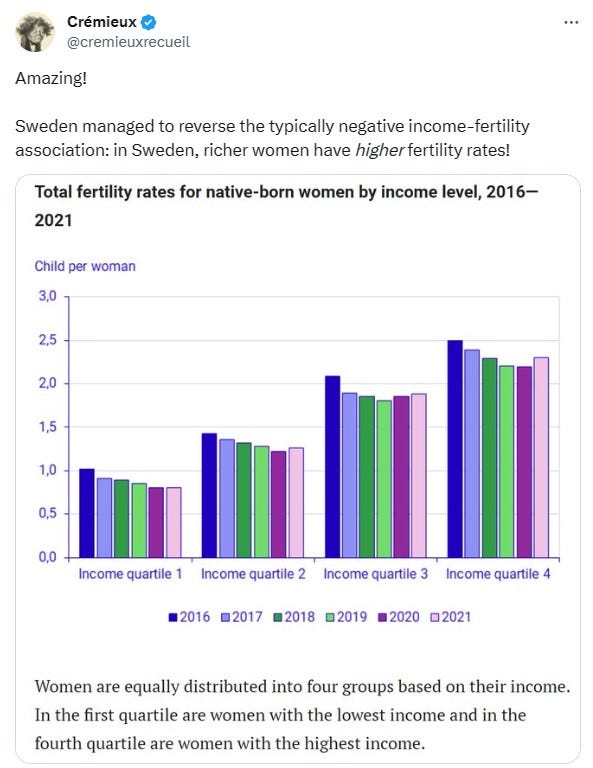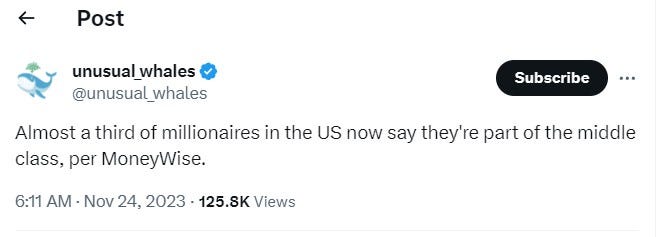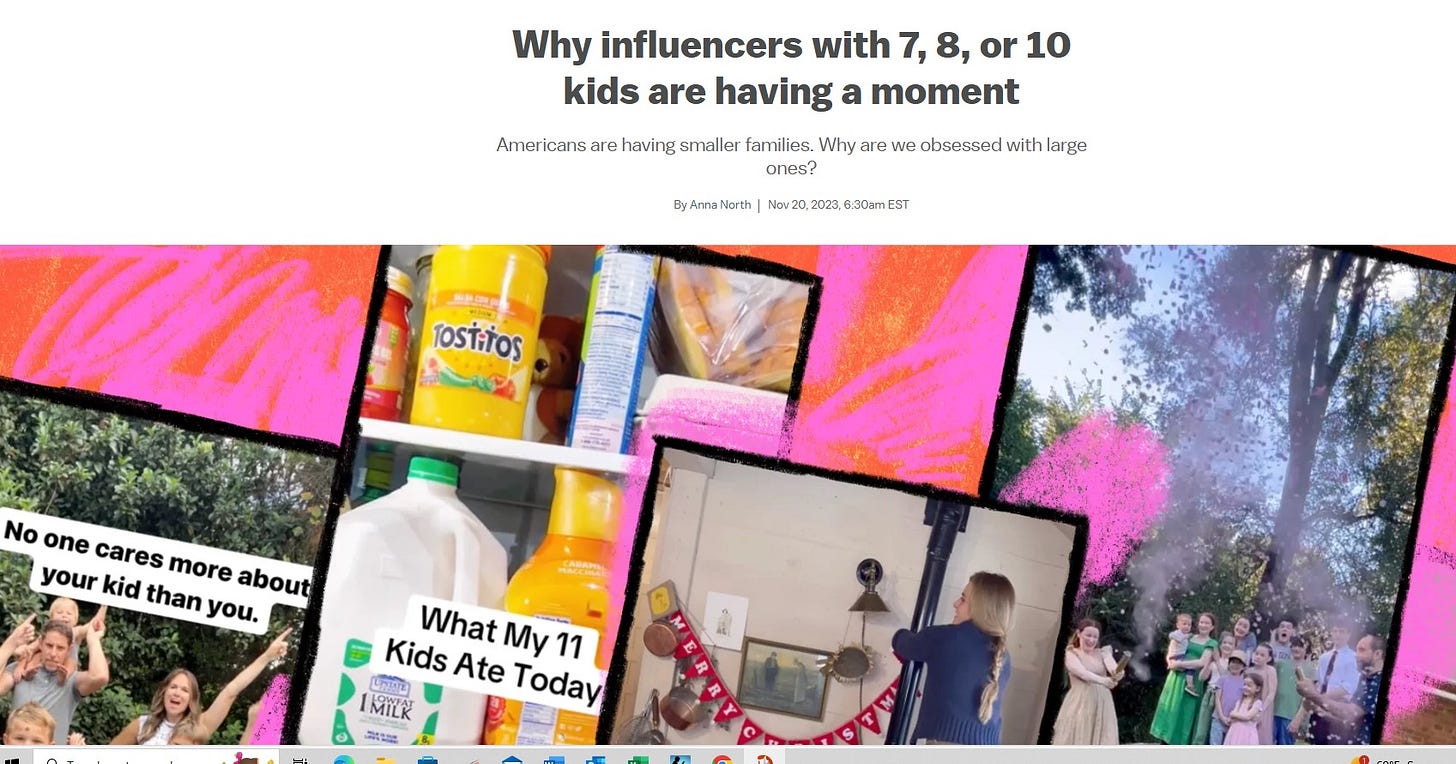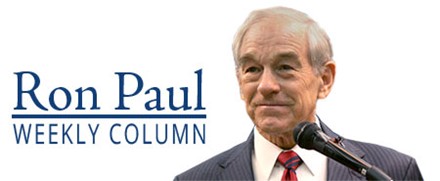What Would the Great Class Swap Look Like if Implemented?, by Robert Stark
The Great Class Swap is a philosophical response to the societal problem that too much wealth is concentrated in the hands of a few while too much population growth is in the underclass, with both trends squeezing out the middle. The Great Class Swap is a social experiment in which wealth is redistributed from the top to the masses while the wealthy repopulate the masses. Simply put, it’s a fusion of economic egalitarianism favoring the poor and middle, but with eugenics favoring the genes from the top. Overall, the Great Class Swap is more of a thought experiment, philosophical outlook, and metric to judge a society by than a political agenda.
The Great Class Swap rejects both liberal egalitarianism and radical individualism, as well as the capitalist meritocratic ideal and Social Darwinism. The Great Class Swap is also a more honest framework than populism, as it does not overly fetishize the common man moralistically. Rather it assess the attributes of various groups, as well as seeks better resource allocation. There is some overlap with producerism, which favors the middle and views both the top and bottom as parasitic. There are also parallels to Plato’s belief in proportional inequality, as well as to Aristotle’s simultaneous belief in a strong middle class and eugenics.
The Great Class Swap is compatible with a Tucker Carlson-like message that the foundation of society is middle class people being able to form families. However, the kind of mass middle class homogeneous, egalitarian, society of the 1950s is not coming back, and especially not with normie conservative political solutions. The only way to recreate that kind of society would likely be via extreme statist measures. The 1950s had strong government programs that invested in the middle class with very high taxes on the wealthy. This model requires both nationalist and communitarian values which I just don’t see returning to America.
There are also comparisons to early 20th Century progressives, who were for social programs to help the poor, while also supporting eugenics and immigration restriction, such as Margaret Sanger. While any ideology can be dangerous if taken to an extreme, the Great Class Swap should represent nuance and dualism which is missing in all modern political discourse. For instance, the philosophy is concerned about dysgenics, but also inequality and cuts people slack for personal failings, which sets it apart from both the modern left and right, a radical centrism.
Source: @SaladBarFan Twitter
Besides a large middle class being good for social stability, the middle class are generally better behaved, which also has its downsides. The problem with the wealthy is that they exploit workers and drive up costs of real estate and other commodities. Besides the poor having higher rates of criminality or anti-social behavior, the upper and middle classes tend to view the poor as inherently undesirable, even if of the same race, which can have both cultural and aesthetic undertones. Thus the middle and upper class avoid the poor which further drives up costs of real estate and puts pressure on resources, such as education. The wealthy and middle class strivers become more hypercompetitive, snooty, and materialistic which creates an overall toxic societal culture. This is bad for social cohesion, and leads to people being closed off from one another, and to enclosing and privatizing space.
Current society mostly fails by Class Swap metrics, especially in urban America, with its extreme inequality and demographic dynamics. Denmark, which is a social democracy with pro-middle class family policies, strict immigration, and one of the highest qualities of life on earth, probably ranks the highest by Class Swap metrics. Basically Denmark is a template for what a Class Swap might look like, though Switzerland, Japan, Czechia and Hungary are close too. It is notable that Denmark is the only European country where native born fertility is higher than for migrants. One Billion Americans advocate, Matt Yglesias, admits that his vision for America’s future won’t be one giant Denmark, in that a certain level of inequality is inevitable. It is important for society to value leisure, like how many European nations do more than America, as well as having ordinary people who come across as wealthy or aristocratic, based upon physical appearance or cultural sensibilities rather than income.
Copenhagen, Denmark
Source: Wikipedia
From a progressive standpoint, a larger wealthy demographic means a larger future tax base, thus more tax revenue to fund social programs. The poor benefit economically from a larger upper class but may feel bad for having lower social standing. This explains resentment that immigrants might feel in Europe, even if their quality of life improves. The idea of the poor benefiting from having social access to upper classes is the basis of leftwing integrationist ideology, though populist conservative, J.D. Vance, proposes mentorship between the classes. It could be a philosophy that the rich exist to serve the common good, a coercive nobles oblige. The implications that the rich should have to sacrifice for their genetic privilege rather than the leftwing blank-slatist concept of privilege. The taboo of hereditarianism is actually a way to conceal inequality and obviously Communism was extremely dysgenic.
Steve Sailer has pointed out that the Left believes that people of color having access to White people is a right. The kinds of policies that the Left desires, require a larger White or affluent demographic to remain viable, though leftwing integrationist policies tend to be dysgenic. There aren’t enough White or upscale people to go around, so breed more of them so the poor and people of color can benefit from access to them. The question is whether there is a better way to achieve social cohesion or should we just accept that every tribe needs their own space, but just focus on reducing economic inequality?
There could be potential downsides to a Great Class Swap, if implemented in full. Say a hypothetical scenario involving a totalitarian regime that seizes and redistributes all wealth, and then forces extreme natalism upon the wealthy, while restricting the lower 70% of the population from reproducing. Having a society where everyone is intelligent could exacerbate elite overproduction, as in Japan and South Korea, which are both high IQ homogenous societies with limited elite spots. There are countless smart Japanese and Koreans who resent having positions beneath them, and end up being very miserable. This probably contributes to Japan and Korea’s abysmally low fertility rates, high suicide rates, and Japan’s Hikkikimori phenomenon.
Tokyo rush hour
Source: Wikipedia
There could also be downsides to positive eugenics based on class, by just looking at the caliber of our current economic elite. Eugenics based primarily on class could fundamentally legitimize neoliberal capitalism under a biological-moral caste system. Prioritizing “the wealthy” could create perverse incentives, such as the effects you see in India, Vietnam, and China, with arranged marriages selecting for merchants. We don’t necessarily want to just breed more drones for the professional managerial class, even if they are high IQ. Class and tribe must transcend beyond income to include many factors, including culture, ancestry and spirituality.
Obviously there are a lot of high caliber, especially smart and creative people, who struggle economically, and awful people who are wealthy. The current economic system rewards a lot of blatant parasitism while not necessarily rewarding the most creative. The decline in creative types passing down their genes is a real tragedy that will have long lasting effects on culture. While there was a period where the literati were wealthy and had lots of kids, today a lot of the most creative live marginal bohemian lifestyles, with the cost of living crisis not helping either.
While a growing underclass is clearly bad, there is nuance and mystery about what would happen if the upper class grew tremendously. The main question is whether the negative traits of the wealthy are primarily due to hypercompetition to get into the elite rather than genetics. If so, then increasing the size of the upper class might ease that. It is notable that declining fertility is partially to blame for the consolidation of wealth, as one offspring receiving all inheritance and parental resources exacerbates income inequality. Thus incentivizing higher fertility among the wealthy could ease inequality.
Source: theamericanconservative.com
There are questions about what hereditary traits that wealth selects for, more specifically under managerial capitalism, and whether they are positive or negative. Wealth is generally correlated with higher IQ, as well as beauty due to assortive mating, though wealth also heavily selects for conformity, especially under managerialism. There are also increasing selection pressures for extroversion and social dominance due to atomization and the breakdown in all traditional courtship. If the wealthy repopulate the masses, would there be a populace that is physically attractive, but also very soft and decadent, much like the blonde Elois in Time Machine, or a populace that is hyper-aggressive?
While those like, Richard Dawkins, have gotten flak for just talking about eugenics as a thought experiment, there needs to be a wholistic look at many traits and variables. People are multifaceted and genetic diversity is generally good. While there are legitimate reasons to oppose eugenics for commodifying people, our “liberal” society already does that. Despite the taboo, people already practice eugenics in matting decisions, with sperm banks being a more blatant example. Not to mention current incentive structures in state policy that impact fertility trends. Overall, I’d rather have Darwinian selection pressures steered by improving the culture than anything bureaucratic.
Source: @cremieuxrecueil Twitter
There were 3 selection forces that created the uniquely middle class egalitarian societies of Northwestern Europe. These included, execution of the most violent criminals, manorialism favoring independence and non-kin cooperation, and Clarkian selection, the wealthier having more surviving offspring and repopulating the middle class. Though Clarkian selection also took place in China and other parts of East Asia. In Scandinavia, downward mobility was eugenic, as the upper classes outbreed the lower classes between 1945 and 1995. Even today, Sweden has higher upper class fertility amongst the native born.
Source: unusual_whales Twitter
While the meritocratic push to get more people into the middle class generally seemed like a good thing, it could be somewhat dysgenic. I wonder if the period where America was so socially open, with greater opportunities for upward mobility, created the genetically amalgamated Amerigoblin phenomenon. America basing being middle class on credentialism has just increased hyper-competition rather than improved people’s quality of lives. Today one has to be fairly wealthy just to have a generic upper middle class suburban lifestyle. This problem can’t be explained purely on economic terms, as demographics and culture shape class, as much if not more so than credentials and income. We ended up with the worst of both worlds, extreme income inequality, plus elites who present themselves like middle class shlubs.
Amerigoblin meme
I foresee continued downward mobility of the middle class, alongside DEI hiring practices, which will exacerbate elite overproduction. As for fertility trends, there was a modest spike in fertility among affluent Whites, in part due to remote work. Overall fertility is u-shaped or rather j-shaped by class, the highest among the poor, then the wealthy, and lowest among the middle class. Having children has become a status symbol since it’s now a luxury that is difficult for average people. The upper classes increasingly raise their kids trad, such as restricting technology, while pushing harmful policies upon the masses, in a sense a strategy of kicking away the ladder behind them.
Source: Vox
Eugenics could very well be rebranded by technological progress, which will win out over moral arguments from both the left and religious people. The wealthy will use CRISPR gene editing and eventually I could see billionaires using artificial wombs to breed thousands of offspring with supermodels. The future is not necessarily Ideocracy or the blended humanity that liberals fetishize and White racialists fear, but rather a caste based society. Even with interracial marriage, there is still extreme assortive mating, and even if the elite get more diverse, expect to see embryo selection used to select for lighter features. Unless there are generous childcare UBI benefits, automation will likely crush fertility among the middle class and poor. The main long-term concern may not be continued dysgenics but rather that gene editing will be used to weed out non-conformity.
AI could end liberalism, by forcing honesty about hereditarianism and destroying the meritocracy, but the question is what will replace it. There are countless dystopian scenarios, involving either oligarchs enslaving the masses, or centralized technocratic government filling that void. The best case scenario would be sharing the profits of automation with UBI, AI making healthcare affordable, decentralized AI, a culture of leisure, and eugenic fertility trends, though inequality is inevitable with AI. A lot of the problems that we complain about are a produce of the 20th century dichotomy, and AI will create both new sets of problems, as well as new solutions to solve existing problems.


